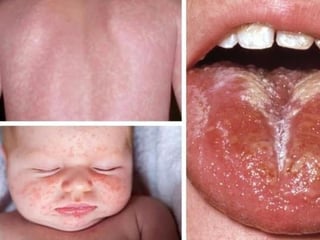What is scarlet fever and why are the number of cases in the North West rising?
and live on Freeview channel 276
Phe warning comes from the UK Health Security Agency (UKHSA) who say that while infections are in line with what we expect to see at this time of year, there has been an increase compared to 2021 when measures during the pandemic such as social distancing, enhanced hygiene and school and nursery closures kept cases below average.
A total of 914 notifications of scarlet fever were reported between September 2021 and March 2022 in the North West, the highest rate of any region in England (see notes to editors for a link to the data).
Advertisement
Hide AdAdvertisement
Hide AdScarlet fever is caused by a bacteria called group A streptococcus. Scarlet fever is usually a mild illness, but it is highly infectious, spread by coughing and sneezing. Other rare symptoms of group A streptococcus infection can include septicaemia (infection in the blood) which can potentially be fatal.


Other rare symptoms can arise when scarlet fever circulates at the same time as other skin infections such as chickenpox in a school or nursery, as is currently the case. Early treatment of scarlet fever with antibiotics is important as it helps reduce the risk of complications.
UKHSA is advising parents to be on the lookout for symptoms, which include a sore throat, headache and fever with a characteristic fine, pinkish or red body rash with a sandpapery feel.
If signs of scarlet fever are suspected, it is important to contact your local GP or NHS 111. Early treatment of scarlet fever with antibiotics is important as it helps reduce the risk of complications such as pneumonia and the spread of the infection to others. Children or adults diagnosed with scarlet fever are advised to stay at home until at least 24 hours after the start of antibiotic treatment to avoid spreading the infection to others.
Advertisement
Hide AdAdvertisement
Hide AdDr Merav Kliner, Interim Regional Deputy Director - North West, at UKHSA, said: “We are reminding parents to be aware of the symptoms of scarlet fever and to call their GP or NHS 111 for further advice or assessment if they think their child might have it. Symptoms to look out for include a fever, sore throat and a pinkish-red rash with sandpapery feel.
“To limit the spread of scarlet fever it is important to practice good hygiene by washing hands with warm water and soap, not sharing drinking glasses or utensils, and covering the nose and mouth when coughing or sneezing.”
UKHSA advises people can protect themselves by:
Washing hands often
Not sharing eating utensils with an infected person
Washing, or disposing of, handkerchiefs and tissues contaminated by an infected person
Being aware that people can catch scarlet fever by inhaling airborne droplets if someone with the illness coughs or sneezes in the air near them.
Use a tissue to catch, bin and kill germs
If you think you, or your child, have scarlet fever:
Seek medical advice
Advertisement
Hide AdAdvertisement
Hide AdIf you or your child are prescribed antibiotics, make sure you take the full course
Current guidance advises that children should not return to nursery or school and adults to work until a minimum of 24 hours after starting treatment to avoid spreading infection
